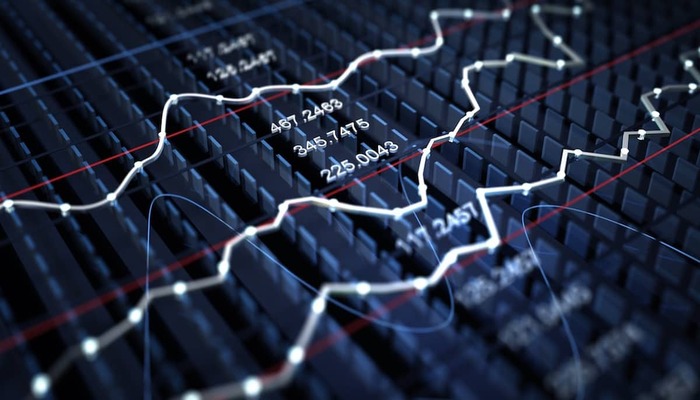Investing in the financial market can be a complex and challenging journey. It requires a clear strategy, such as utilizing technical analysis, and the ability to make informed decisions to achieve success. Navigating this journey effectively often depends on selecting the right analysis methods.
Among the various methods available, technical analysis stands out as a valuable tool for investors. It helps in identifying trends, understanding price movements, and pinpointing potential entry and exit points in the market. This method offers crucial insights that go beyond basic market observations.
By understanding and leveraging these techniques, investors can make better-informed choices and handle market complexities with greater confidence. This strategic approach provides them with the tools needed to react swiftly and make more precise investment decisions.
What is technical analysis?
Technical analysis is a financial asset valuation methodology that focuses on examining historical price and trading volume data to predict future trends. Unlike fundamental analysis, which assesses a company’s financial health, earnings, and overall economic conditions, technical analysis emphasizes the study of market movements, price patterns, and trading signals.
It’s based on the idea that the collective behavior of market participants drives price action, which can be tracked and analyzed to find trading opportunities.
This approach operates on the assumption that asset prices reflect all available information, making price action a key indicator of market sentiment. Technical analysts believe that market psychology and behavior, including emotions like fear and greed, are embedded in these price movements.
By studying these patterns, traders aim to anticipate the decisions of other market participants.
Additionally, technical analysis assumes that historical price and volume patterns tend to repeat over time. By identifying these recurring patterns and trends, such as head and shoulders, double tops, or support and resistance levels, traders aim to forecast future price changes and make informed trading decisions.
This predictive approach allows investors to identify profitable entry and exit points with a higher degree of confidence.
Charts in technical analysis
Charts play a central role in technical analysis. They visually represent the price history of an asset over time and are the basis for identifying market trends and patterns. There are several types of charts used in technical analysis, the most common of which are:
Line charts:
Line charts are a simple and effective tool in technical analysis as they help investors identify general trends over time. By connecting closing prices at consecutive points, these charts provide a smooth representation of the asset’s trajectory, making it easier to identify whether it is in an uptrend, downtrend, or sideways trend.
However, it is important to note that line charts do not offer much detail about intra-day volatility, variations in prices within the daily trading period.
Bar charts:
Bar charts are a versatile tool in analysis, providing detailed information about the price action of an asset over a specific period of time. Each vertical bar represents a unit of time, be it minutes, hours, days or any other investor’s choice.
The bar includes four key points: the opening price (represented by the left end of the bar). The closing price (represented by the right end of the bar), the maximum price reached during the period (represented by the top of the bar) and the minimum price reached (represented by the bottom of the bar).
Candlestick charts:
Candlestick charts also show The Open, Close, High and low prices, but are presented in a more visually intuitive way. Each” candle ” has a body (the difference between opening and closing) and shadows (the differences between the maximum/minimum prices and the body). Candlestick patterns are widely used in technical analysis.
Indicators in technical analysis
In addition to charts, indicators play a crucial role in technical analysis by providing insights beyond simple price movements. These mathematical tools help investors identify trends, potential reversals, and overbought or oversold conditions. By combining indicators with chart patterns, investors can better understand market dynamics and make informed decisions.
Moving Average is a widely used indicator that smooths out price fluctuations, making trends easier to identify. The Simple Moving Average (SMA) gives equal weight to all data points, while the Exponential Moving Average (EMA) emphasizes recent price changes. Moving averages help confirm trends and provide key trading signals.
The Relative Strength Index (RSI) measures the speed and strength of price movements, oscillating between 0 and 100. Levels above 70 indicate overbought conditions, while levels below 30 signal oversold conditions. Traders use the RSI to identify potential market turning points.
MACD (Moving Average Convergence Divergence) is a trend-following indicator that identifies the convergence and divergence of two moving averages. It generates buy and sell signals based on crossovers between the MACD line and the signal line, indicating bullish or bearish trends.
Bollinger Bands consist of a central moving average with two bands representing price volatility. The bands expand and contract based on market conditions, helping traders spot potential breakouts and reversals. Price movement near the upper band suggests overbought conditions, while movement near the lower band indicates oversold conditions.
The Stochastic Oscillator compares an asset’s closing price to its price range over a set period. It oscillates between 0 and 100, identifying overbought and oversold conditions. Crossovers between the two lines in the stochastic can also signal trend reversals.
Practical use of technical analysis
Technical analysis is a valuable tool for investors of all experience levels. It can be used to identify entry and exit points in trading, manage risk, and make informed decisions about asset allocation.
However, it is important to note that is not a guarantee of success. Financial markets are influenced by a variety of factors. And does not take into account unpredictable events that can affect prices.
In addition, the interpretation of charts and indicators requires skill and practice. Many investors make mistakes when using technical analysis, such as overestimating the accuracy of indicators or completely ignoring the fundamentals of companies.
Technical analysis is a powerful tool for investors who want to make informed decisions in the financial market. Charts and indicators provide a structured way to analyze past price behavior and identify possible future trends.
However, it is important to remember that is not foolproof and should not be used in isolation. Combining with a solid understanding of business fundamentals. And a disciplined approach to risk management is critical to long-term success in the investment market.





